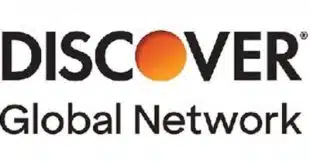Elon Musk helped found what became PayPal back at the turn of the century, and now it appears he is moving on an ambition he outlined months ago to add a payments feature to Twitter, the social-media platform he paid $44 billion to acquire in October.
The San Francisco-based company has begun working on software and applying for licenses across the United States to support the service, according to a story posted late Monday by The Financial Times, which cited two sources familiar with the initiative. Twitter could not be reached for comment.
The new platform would process familiar fiat transactions but would also be capable of handling cryptocurrency, according to the FT story, which cited two sources. Esther Crawford, director of product management at Twitter, is heading up the initiative, according to reports. Crawford came to the company in December 2020 when Twitter bought Squad, of which she was chief executive. Squad specialized in arranging screen sharing and group viewing of videos, according to Crawford’s LinkedIn profile.

Twitter expects the payments service to generate significant revenue, though not immediately and despite competition with established payments apps such as Apple Pay that have been in the market for years. While he was planning last spring to acquire the company, Musk presented estimates to investors indicating that a payments service intertwined with a social-media platform could take in roughly $1.3 billion in revenue annually by 2028, according to earlier reporting by The New York Times, though it isn’t clear what the fees would be and who would pay them.
Observers say it’s not surprising Musk would push for a payments service, given his background and the need to open more sources of revenue for Twitter. The open question is whether users will adopt payments via Twitter in preference to services they may already use, such as PayPal or card-on-file with a merchant, says Thad Peterson, strategic advisor at financial-services consultancy Aite-Novarica Group.
“Unless there is a significant difference in the purchase experience using this capability, be it lower friction, lower cost, or something else, it’s hard to envision a situation where a consumer would choose a payment type that’s only available on one social-media platform, especially when that platform isn’t as commerce-focused as others, like Facebook and Instagram,” says Peterson in an email message to Digital Transactions News.
Twitter had 368 million users worldwide at the end of 2022, according to figures from online data source bankmycell.com, a number that grew almost 18% last year. The site, however, expects the user base to dwindle to 354 million by the end of this year. Monthly daily users came to 238 million as of last year’s second quarter, the site says.
Musk envisions peer-to-peer payments, savings accounts, and debit cards as components of a so-called “everything app” for Twitter, according to the FT report. He launched a payments service in 1999 called X.com, which merged with other players to form PayPal in 2001, though Musk left in 2000. EBay purchased the company for $1.5 billion in 2002, and in 2015 it went public. Musk acquired the X.com name from PayPal two years later.
Observers point out that the Twitter platform is no stranger to payments transactions, though that activity is typically initiated by users who want to pay others on the system. Indeed, entrepreneurs over the years have sometimes leveraged Twitter’s reach to support payments startups, though without much success. One notable example was Twitpay Inc., which started out in 2008 managing peer-to-peer transactions for users on Twitter but within two years branched into other payment types after failing to gain traction.





